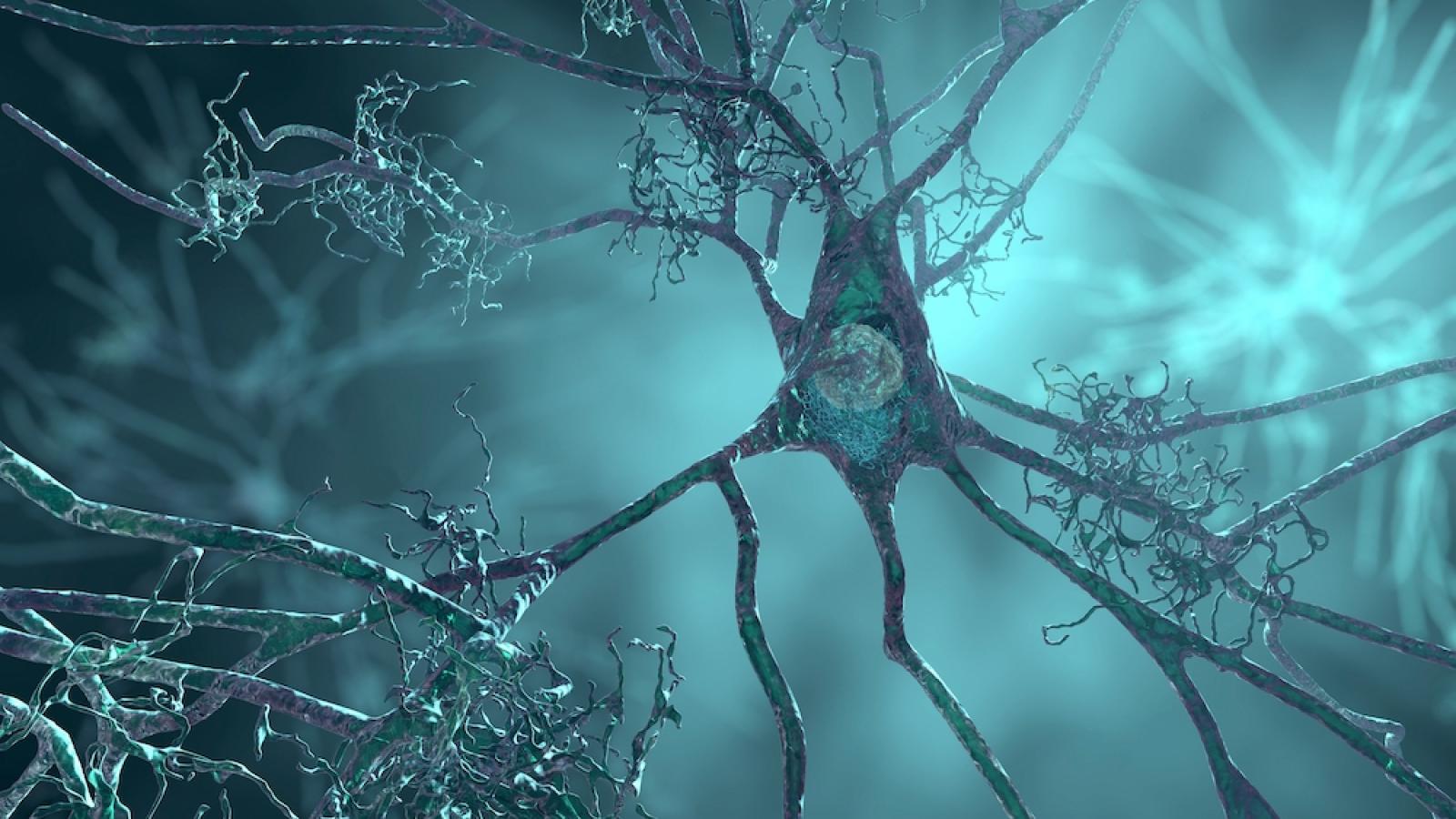Researchers led by Prof Karen Duff (UK DRI Centre Director at UCL) and Prof Andrew Yoo (Washington University School of Medicine) have created a new model system for studying the pathology of tau, a protein implicated in Alzheimer’s disease (AD), frontotemporal lobe dementias (FTD) and other neurodegenerative conditions, as reported in a new study published in Cell Stem Cell.
There are six distinct variants of tau protein present in adult human brains that differ in certain features, including the number of repeat regions in a section of the protein known as the ‘microtubule binding domain’ (termed 3R or 4R). 3R and 4R tau are expressed at a 1:1 ratio in a healthy adult human brain. The ratio is different in abnormal brains, such as those affected by FTD.
A challenge of studying tau pathology is finding a system that accurately reflects the ratio of tau present in human neurons, as adult mice do not express 3R tau, and induced pluripotent stem cells (iPSCs) do not express much 4R as they represent foetal stages of development rather than adult brain cells. Therefore, the team set out to develop a cellular model system that would provide a more accurate, representative model for studying the biology of tau, both in its healthy and diseased state.
variants of tau protein present in the adult human brain
Creating a cell model that replicates human tau diseases has been extremely challenging, but these new cells give us the tools we will need to explore the earliest stages of the disease, when it is most targetable.Prof Karen DuffCentre Director
Using an approach developed in the Yoo lab, the researchers used microRNAs to reprogram human fibroblasts. MicroRNAs are a type of RNA (single stranded nucleic acid similar in structure to DNA) that play a role in regulating cell growth and neuronal differentiation. Fibroblasts are a type of cell that contribute to the formation of connective tissue and they are easy to grow in a laboratory setting.
The researchers found that human fibroblasts could be reprogrammed to generate human neurons that express 3R and 4R tau at the same ratio detected in adult human brains. They also showed that using fibroblasts from people with FTD who have a mutation that resulted in increased 4R tau led to the generation of human-derived neurons with an imbalanced 3R:4R tau ratio. The key findings of the study were that unlike other cell model systems, the mutant neurons developed tau pathology reminiscent of the earliest stage of pathology in the brain of a person with FTD.
These findings represent a significant leap forward in scientists’ ability to study the pathology of tau in a cell model system that is relevant for the adult human brain. Researchers hope these model systems will lead to a greater understanding of neurodegenerative diseases and open up new avenues for treatment of these conditions.
To find out more about Prof Karen Duff's research, visit her UK DRI profile. To stay up to date on the latest research news and Institute updates, sign up to receive our monthly newsletter, ‘Inside Eye on UK DRI'.
Reference: Lucia S. Capano, Chihiro Sato, Elena Ficulle, Anan Yu, Kanta Horie, Ji-Sun Kwon, Kyle F. Burbach, Nicolas R. Barthélemy, Susan G. Fox, Celeste M. Karch, Randall J. Bateman, Henry Houlden, Richard I. Morimoto, David M. Holtzman, Karen E. Duff, Andrew S. Yoo, Recapitulation of endogenous 4R tau expression and formation of insoluble tau in directly reprogrammed human neurons, Cell Stem Cell, Volume 29, Issue 6, 2022, Pages 918-932.e8, https://doi.org/10.1016/j.stem.2022.04.018.
Article published: 19 July 2022
Banner image: Shutterstock/Kateryna Kon
